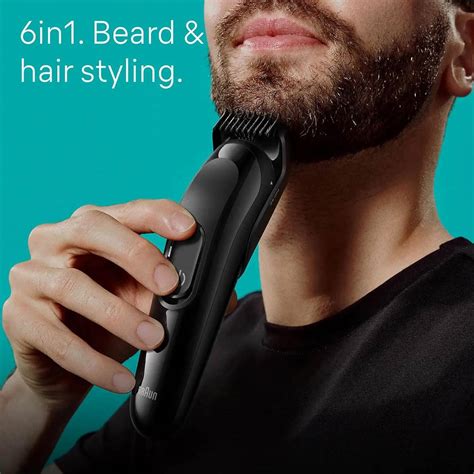Introduction

Maintaining a stylish and well-groomed hairstyle is essential for men’s confidence and overall appearance. Hair clipping, a simple yet effective technique, offers a versatile solution for shaping hair, trimming beards, and achieving desired styles. This comprehensive guide provides a step-by-step approach, valuable tips, and essential information for mastering the art of hair clipping.
1. Hair Clippers
- Choose clippers with adjustable blades for precise length control.
- Opt for clippers with sharp, durable blades for clean cuts.
- Consider the power source (cordless, corded) based on your preferences.
2. Attachments (Guards)
- Guards provide varying lengths for customized cutting.
- Select guards that align with your desired hair length.
- Opt for guards made from sturdy materials to withstand frequent use.
3. Scissors
- Sharpened scissors are ideal for trimming hair and detailing edges.
- Choose scissors designed specifically for hair cutting tasks.
4. Comb
- A fine-toothed comb helps detangle hair before cutting.
- Use a comb to guide the clippers and ensure even cuts.
5. Shampoo and Conditioner
- Clean hair is easier to cut and style.
- Use shampoo and conditioner to prepare your hair for clipping.
1. Prepare Your Hair
- Wash and condition your hair to remove dirt and oils.
- Towel-dry your hair to remove excess moisture.
- Detangle your hair using a comb.
2. Choose Attachment
- Select the guard corresponding to your desired hair length.
- Secure the guard on the clippers firmly.
3. Create Parting
- Use a comb to create a parting at your preferred location.
- This parting will guide your cutting.
4. Start Clipping
- Hold the clippers against the hair at a slight angle.
- Glide the clippers lightly over the hair, starting from the back of the head.
- Move the clippers in the direction of hair growth.
5. Trim Around Ears and Neckline
- Remove the guard and use the clippers directly to cut hair around the ears and neckline.
- Be cautious and follow the contours of your head.
6. Blend Sections
- For a seamless transition between hair lengths, use a longer guard on overlapping sections.
- Overlap the sections and clip to blend the hair.
7. Trim and Detail
- Use scissors to refine the cut and trim any stray hairs.
- Comb your hair to identify areas that require additional trimming.
8. Style
- Use a hair product to style your hair as desired.
- Consider gel, pomade, or mousse for different hold and finish.
1. Fading
- Gradually transition from a shorter hair length at the sides to a longer length at the top.
- Use clippers with adjustable blades to blend the lengths.
2. Tapering
- Taper the hair from the neck to the crown of the head.
- Start with a shorter guard at the neck and gradually increase the length towards the crown.
3. Layering
- Create layers in the hair by cutting the hair at different lengths.
- Use different guard sizes and overlap sections to create texture and volume.
- Use Sharp Clippers: Maintaining sharp blades ensures clean cuts and reduces hair pulling.
- Follow the Direction of Hair Growth: Cutting against the grain can result in uneven cuts and damage.
- Use Multiple Attachments: Different guards provide flexibility in hair length customization.
- Comb First, Clip Second: Detangling hair before cutting prevents tangles and ensures an even cut.
- Take Breaks: Rest your hand frequently to avoid muscle strain.
- Practice Makes Perfect: Patience and practice enhance your technique over time.
1. How often should I clip my hair?
Answer: The frequency depends on your hair growth rate and desired style. As a general rule, clipping every 2-3 weeks maintains a neat appearance.
2. Can I use hair clippers to trim my beard?
Answer: Yes, hair clippers with adjustable blades can be used to trim beards. However, it’s important to use a beard attachment designed specifically for facial hair.
3. How do I choose the right clipper for me?
Answer: Consider the power source (cordless or corded), blade material, blade adjustability, attachments, and overall comfort when selecting hair clippers.
4. Can hair clipping damage my hair?
Answer: Using sharp clippers, following the direction of hair growth, and avoiding over-clipping helps minimize hair damage. Additionally, conditioning and moisturizing your hair after clipping prevents dryness and breakage.
| Type | Description | Benefits |
|---|---|---|
| Cordless | Portable, convenient, and easy to maneuver | Freedom of movement, ideal for detailed work |
| Corded | Reliable, high-power performance | Excellent for extended cutting sessions |
| Rotary | Powerful and efficient | Quick cutting, suitable for thick or coarse hair |
| Pivot | Flexible cutting head | Conforms to head shape, providing precise cuts |
| Material | Durability | Sharpness | Cost |
|---|---|---|---|
| Stainless Steel | Excellent | Very sharp | Moderate |
| Ceramic | Good | Sharper than steel | High |
| Titanium | Outstanding | Extremely sharp | Premium |
| Attachment Type | Length | Usage |
|---|---|---|
| Fine | Short (3 mm or less) | Trimming beards, creating fades |
| Medium | Medium (5-12 mm) | General haircutting, tapering |
| Coarse | Long (15 mm or more) | Defining hairlines, blending sections |
| Variable | Adjustable | Customizable length control |
| Product Type | Hold | Finish |
|---|---|---|
| Gel | Strong | Shiny, sleek |
| Pomade | Medium | Matte, natural |
| Mousse | Light | Volumizing, airy |
| Cream | Medium | Smooth, defined |
Hair clipping offers a cost-effective and versatile solution for maintaining a stylish and well-groomed appearance. By following the step-by-step guide, using the right tools and techniques, and attending to the tips provided, you can master the art of hair clipping and achieve the desired hair style with precision. Embrace the experience, experiment with different techniques, and elevate your hair game to the next level.
